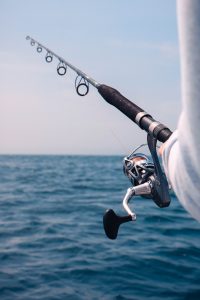Pillar Section 2: How to Define a Prospect
How to Define a Prospect
The first step to developing your trade show strategy plan is to understand your prospect. Too often we watch CEOs apply an overly broad definition of their target market for fear of missing out (FOMO) on potential prospects. In reality, true prospects for any B2B company make up a very narrow segment of the market. Just as a wider net does not necessarily catch better fish, broadening the definition of a prospect does not necessarily deliver better leads.
The Three Key Qualities
Prospects of today have three key qualities: a bona fide, self-realized need; the resources to satisfy that need; and a sense of urgency—they need a solution today! Without each these three qualities, a lead does not qualify as a prospect. Remember this in three words:
- Need
- Money
- Now
Therefore, the first step to developing your trade show strategy plan should be to invest time in profiling your target prospect and aligning your strategies, materials, and calls to action to this individual. Like an experienced fisherman, this process is similar to selecting what you want to catch, the right body of water, and the most effective bait to attract only your desired fish.
Knowing your target prospects and possessing the right tools to reach them will not only maximize the value of each trade show experience, it will be the cornerstone of your annual trade show strategy plan.
Operating from a place of fear that you might be missing potential prospects rather than a place of confidence that you have developed the best possible marketing tactics to reach them is the most common pitfall we see at trade shows.
Prospects Don’t Wear Name Tags
 When you picture a trade show, you might imagine a sea of people. The challenge for exhibitors, sponsors, hospitality hosts, or even speakers is that prospects aren’t labeled. At first glance, we can’t differentiate between the catfish and the tuna. None of them have a sign on their back that says: “Pick me! Pick me! I’m your Prospect!”
When you picture a trade show, you might imagine a sea of people. The challenge for exhibitors, sponsors, hospitality hosts, or even speakers is that prospects aren’t labeled. At first glance, we can’t differentiate between the catfish and the tuna. None of them have a sign on their back that says: “Pick me! Pick me! I’m your Prospect!”
Overcoming the common pitfall of a broadly defined prospect requires focusing your trade show strategy plan on a narrow buyer persona. To even qualify, your buyer must have a need, adequate resources, and a sense of urgency such that your solution is precisely what they are looking for.
In order to build a buyer persona around these attributes, you’ll need to develop a profile that clearly identifies the individual and organization you’ll be targeting, as well as their unique needs, challenges, and primary objectives in terms of what they’re looking to accomplish.
In-depth buyer personas will not only help you distinguish between high and low-quality prospects in the sea of trade show attendees, but it will also help to inform your marketing strategy for appealing to these individuals. Additionally, it will help you select which events to attend, avoiding what we refer to as the Lazy Susan approach, or subscribing to whatever offer is in front of you today.
Click here to download the full report: How to Maximize ROI with a Trade Show Strategy Plan
About
MEET (meetroi.com) helps international B2B growth companies soft land and scale in the U.S. through trade shows and in-person events. MEET’s processes help its clients ramp-up sales quickly and maintain a steady stream of high-quality prospects going forward. Contact Bill Kenney for a free, no-obligation consultation bill@meetroi.com or +1 (860) 573-4821.
